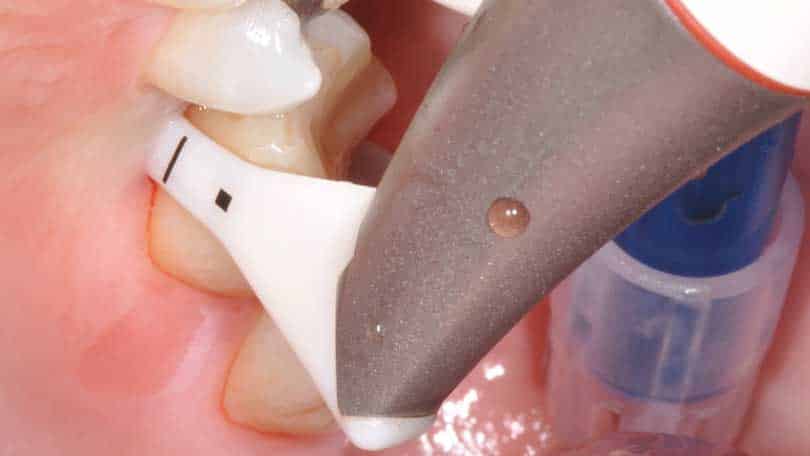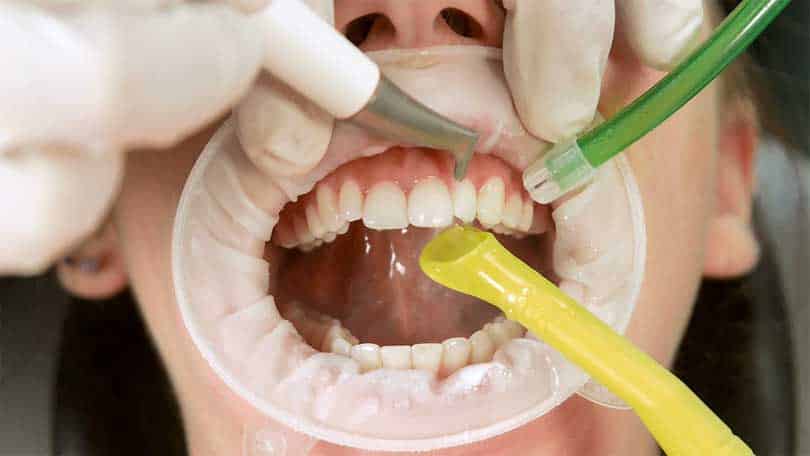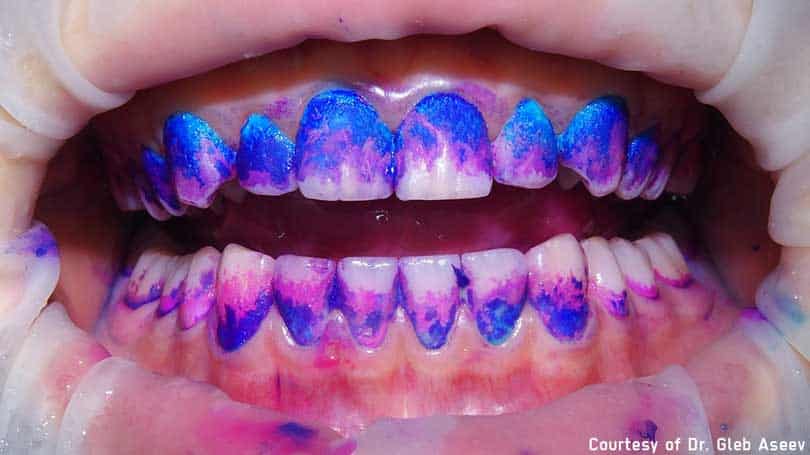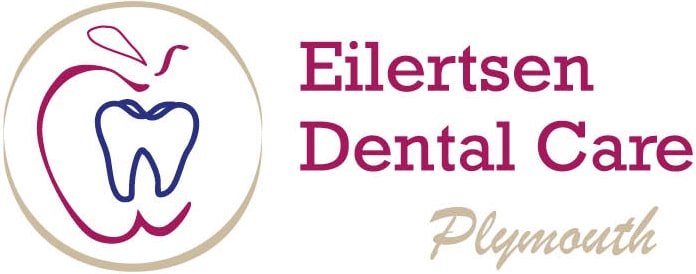Understanding the pivotal role of oral hygiene in overall health has led to significant advancements in dental care practices. Among these, guided biofilm therapy stands out as a revolutionary approach. Focusing on the management and removal of biofilm – a complex layer of bacteria harmful to teeth and gums; responsible for tooth decay and gum disease. GBT represents a paradigm shift in preventive dental care. Offering a less invasive, more effective solution for maintaining oral health.
This article delves into the essence of GBT, highlighting its importance in biofilm management and detailing the process involved. We aim to provide a comprehensive overview, comparing GBT to traditional methods to underline its comparative benefits. By the conclusion, readers will be well-informed on how GBT could transform dental care practices, promoting healthier smiles with a patient-centred, prevention-focused approach.

Guided Biofilm Therapy: An Introduction
Definition
GBT is for everyone – Guided Biofilm Therapy is a minimally invasive approach that revolutionises the management of dental biofilm, commonly known as plaque. This method is tailored to meet the unique needs of each patient, ensuring personalised dental care. GBT utilises state-of-the-art technologies like AIRFLOW®, PERIOFLOW®, and PIEZON® to systematically and predictably manage biofilm, adhering to the highest standards of patient comfort and clinical efficiency. This approach aligns with the recommendations of the European Federation of Periodontology (EFP) for Professional Mechanical Plaque Removal (PMPR) and Oral Hygiene Instructions (OHI).

Technological Innovations
The technological cornerstone of GBT is the AIRFLOW® ONE handpiece, a Swiss-developed device that significantly enhances the effectiveness of biofilm removal. This handpiece emits a controlled stream of warm water and fine powder, which gently yet effectively dislodges and removes food particles, plaque, and stains from the teeth’s surfaces and hard-to-reach areas. The AIRFLOW® technology is particularly beneficial for patients with sensitive teeth, dental implants, or orthodontic braces, providing a comfortable cleaning experience without the discomfort typically associated with traditional cleaning methods.
Moreover, the AIRFLOW® handpiece is designed to avoid direct contact with dental surfaces, which reduces the risk of damage to the teeth or gums. This feature, combined with the ability to reach up to 4mm underneath the gum line, ensures a thorough clean that traditional methods cannot match. The use of a harmless dye during the GBT process also aids in visualising the plaque, making it easier for both the dental professional and the patient to identify areas that require more intensive cleaning.
Guided Biofilm Therapy not only prioritises the removal of soft plaque deposits but also focuses on polishing the teeth and removing surface stains simultaneously. This integrated approach to dental hygiene promotes not only oral health but also systemic well-being, as maintaining clean teeth and gums can help prevent a range of systemic diseases.
Importance of Biofilm Management
GBT helps early detection of white spots and caries, whilst being minimally invasive. Additionally GBT hinders gingival overgrowth, gingivitis and recession. Effective management of biofilm is critical not only for maintaining oral health, but also for preventing systemic diseases that can be exacerbated by poor oral hygiene. Biofilm, a complex aggregation of bacteria on surfaces like teeth and gums, plays a pivotal role in the development of periodontal diseases, tooth decay and gum disease, which can significantly impact overall health.
Impact on Oral and Systemic Health
Biofilm management involves comprehensive dental treatments to identify and manage periodontal diseases, returning the periodontal tissues to a healthier state . This is crucial because biofilm can contribute to systemic conditions, such as cardiac endocarditis, which can be triggered by bacteria from oral biofilm . Furthermore, individuals with existing health concerns, such as kidney disease or cardiac issues, need to manage oral biofilm effectively to prevent these health issues from worsening.
The rapid reproduction and complexity of biofilm mean that it becomes more resistant and harder to manage, especially with traditional cleaning methods. Mechanical debridement, such as brushing or using oral irrigators, often fails to remove all biofilm, particularly in hard-to-reach areas below the gum line . This incomplete removal can lead to a rapid re-growth of biofilm, sometimes increasing four-fold within just three hours.
Preventing Dental Diseases
Regular and effective biofilm management is essential in preventing dental diseases such as caries and periodontitis. These conditions are primarily caused by the dysbiosis of tooth-associated biofilms and can lead to further complications like tooth loss and systemic inflammation . Advanced biofilm management techniques, such as the use of chlorine dioxide, have shown effectiveness in debriding biofilm, offering a safer and more efficient alternative to traditional methods .
Moreover, consistent homecare practices are vital. This includes brushing teeth twice daily and using floss correctly to manage biofilm accumulation effectively. It’s also important for patients with orthodontic appliances or dentures to follow specific hygiene practices to prevent biofilm build-up on these devices .
In summary, managing biofilm is not only crucial for preventing oral diseases but also for mitigating the risk of systemic health issues. Advanced techniques and consistent homecare are key components in effective biofilm management, ensuring both dental and overall health are maintained.

Steps of the GBT Process
Assessment and Biofilm Disclosure
The Guided Biofilm Therapy process begins with a thorough assessment of the patient’s oral health. Dental professionals assess teeth, gingiva, and periodontal tissues, as well as implants and peri-implant tissues . This initial evaluation is crucial to tailor the GBT to individual needs based on diagnosis and risk assessment. Following the assessment, a harmless dye is applied to the teeth. This dye physically stains the bacteria, highlighting the biofilm and problematic areas, thus guiding the subsequent cleaning process.
AirFlow Technology in Action
Once the biofilm is disclosed, the AIRFLOW® ONE handpiece is employed. This device projects a controlled stream of air, warm water heated to 40 degrees Celsius, and fine sweet powder onto the teeth and gums. The high-pressure stream effectively dislodges and removes food particles, plaque, discolouration, and stains without direct contact with the teeth or mouth, preserving dental integrity . The AIRFLOW® technology, with its PLUS powder, is particularly adept at accessing and cleaning difficult areas such as deep pits, fissures, and orthodontic appliances, ensuring comprehensive removal of biofilm.
Final Steps and Patient Education
The final steps of GBT involve the use of the PERIOFLOW® and ‘No Pain’ Piezon® technologies for meticulous cleaning. The PERIOFLOW® technology targets biofilm in pockets deeper than 4mm, while the Piezon® method is used for the gentle removal of any remaining calculus without causing pain . After the cleaning, the dental professional will review the results with the patient, emphasising the importance of ongoing prevention and proper oral hygiene practices. Patients receive personalised education on how to care for their teeth and gums at home, ensuring long-term maintenance of oral health.
Comparative Benefits of GBT
Guided Biofilm Therapy offers a significant advancement over traditional dental cleaning methods, primarily through its innovative use of technology and patient-centred approach. The AIRFLOW®, PERIOFLOW®, and PIEZON® systems are at the heart of GBT, enabling a more effective and less invasive treatment protocol. This approach is not only backed by robust scientific research but also ensures customised care tailored to the individual needs of each patient, resulting in optimal outcomes.
Compared to Traditional Methods
Traditional dental cleaning often involves manual scraping of tartar and plaque, which can be uncomfortable and painful, especially for patients with sensitive teeth or significant tartar buildup. In contrast, GBT utilises a high-pressure stream of air, warm water, and fine particles to gently remove these deposits. This method is significantly more comfortable and reduces the risk of damage to the tooth enamel. Additionally, the AIRFLOW® system has proven more effective in removing plaque and surface stains compared to conventional methods, thus enhancing patient experience and treatment outcomes.
Patient Comfort and Satisfaction
One of the paramount advantages of GBT is the enhanced comfort and satisfaction reported by patients. The technology’s ability to clean without direct contact and its gentle approach significantly reduce discomfort during the procedure. This is particularly beneficial for patients with dental anxiety or special needs, who find traditional cleaning methods stressful or frightening. Post-treatment feedback from patients consistently highlights a high level of comfort and satisfaction, reinforcing GBT’s role in improving the patient experience in dental care.

Conclusion
Guided Biofilm Therapy (GBT) emerges as a pivotal innovation in dental care, offering a more effective, less invasive approach to maintaining oral hygiene and preventing associated diseases. By leveraging advanced technology, such as AIRFLOW®, PERIOFLOW®, and PIEZON®, GBT offers personalised treatment that ensures the thorough removal of biofilm, reducing the risk of periodontal diseases and their potential systemic impacts. This method underscores the crucial need for effective biofilm management, emphasising not only the health of the mouth but its influence on overall well-being, thereby marking a significant leap forward from traditional dental cleaning methods.
As we reflect on the benefits and advancements brought by GBT, it becomes clear that embracing this modern approach could significantly enhance patient outcomes and satisfaction. The method’s emphasis on patient comfort, combined with its effectiveness, presents a compelling case for its wider adoption in dental practices. For those looking to experience the difference GBT can make in their oral health regimen, consider taking a proactive step towards a healthier smile and book an appointment for this innovative therapy. By doing so, patients not only invest in their dental health but also contribute to the ongoing evolution of dental care practices, moving towards a future where oral hygiene is synonymous with minimal discomfort and maximal efficacy.
FAQs
What exactly is Guided Biofilm Therapy and why might someone need it?
Guided Biofilm Therapy involves using the AIRFLOW® device to initially remove plaque (soft deposits) from teeth, while simultaneously polishing the teeth and eliminating surface stains. The AIRFLOW® handpiece utilises a combination of air and water, avoiding direct contact with teeth or gums.
Is undergoing Guided Biofilm Therapy a painful process?
Guided Biofilm Therapy employs the latest technology for professional teeth cleaning and is completely pain-free. This method does not involve any scraping or the use of sharp instruments, ensuring a comfortable experience.
Could you explain what biofilm treatment involves?
Biofilm treatment typically involves using surgical debridement alongside high doses of antibiotics and antimicrobial agents. This combination works to break down and eradicate sufficient amounts of the biofilm, allowing the body’s own immune system to handle the remainder. Biofilm itself is a complex aggregation of bacterial cells surrounded by a self-produced protective layer known as an extracellular polymeric slime (EPS) matrix.
How safe is biofilm therapy?
Guided Biofilm Therapy is supported by scientific evidence and is tailored to each patient based on their individual diagnosis and risk assessment. This ensures the treatment is administered in the least invasive manner possible, maximising comfort, safety, and efficiency.
Find find out more about our Guided Biofilm Therapy services.
Please also see our post on teaching children about plaque removal and advanced hygiene treatments available privately.

